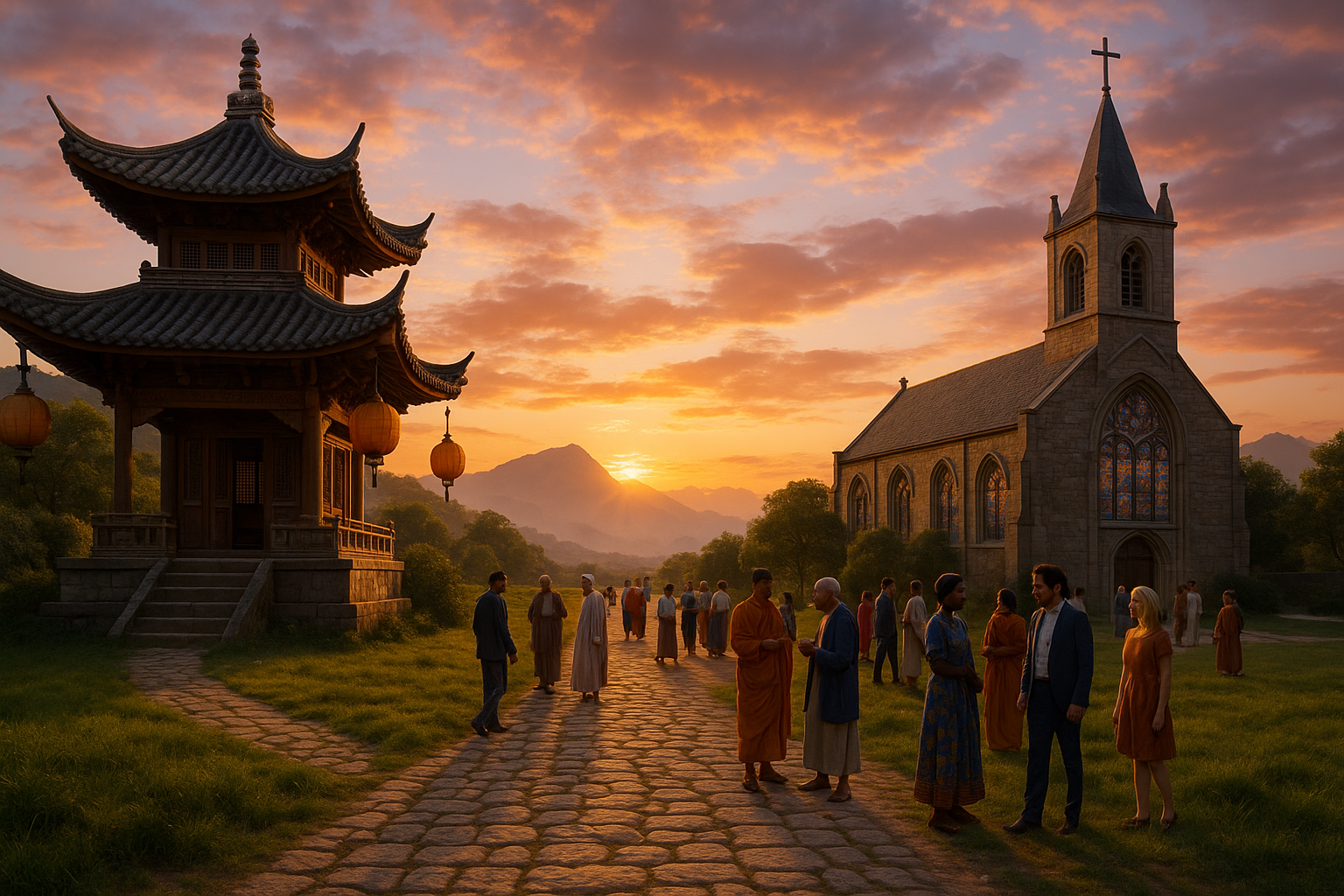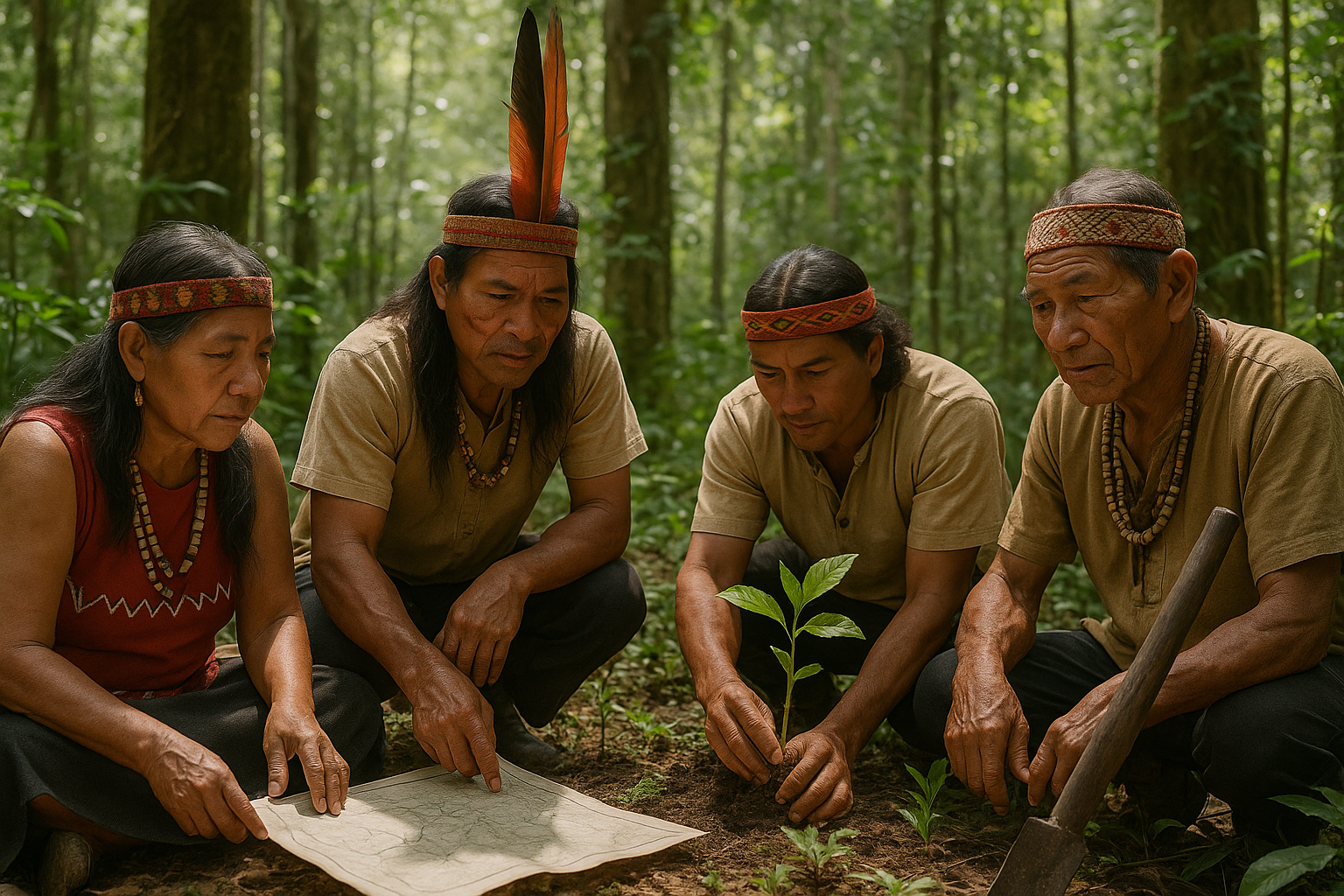Religion and culture have long been intertwined, influencing the way societies understand the world and their place within it. One of the most intriguing aspects of this relationship is how these forces shape territorial boundaries. 🌍 The concept of Divine Borders, where the spiritual and cultural dimensions converge to define physical spaces, offers a fascinating lens through which we can explore historical and contemporary territorial demarcations.
Throughout history, the invisible hand of religious belief has carved out some of the most significant borders in the world. From the hallowed lands of the Middle East to the sacred mountains of Asia, the intersection of faith and geography creates a mosaic of territories defined not just by political lines, but by spiritual significance. These boundaries are not just lines on a map; they are vibrant narratives that tell the story of humanity’s quest for identity, belonging, and meaning.
But how exactly do religion and culture influence the demarcation of territories? And what are the implications of these divine borders in a world that is increasingly interconnected and secular? To unravel these questions, we must delve into a variety of case studies and explore the intricate ways in which sacred beliefs and cultural norms intersect with geography.
One key aspect to consider is the role of religious texts and doctrines in shaping territorial claims. Many religious traditions contain references to promised lands or holy sites that followers consider divinely ordained. For instance, the significance of Jerusalem in Judaism, Christianity, and Islam has been a focal point of both spiritual devotion and territorial conflict for centuries. This holy city serves as a powerful symbol of how religious conviction can fuel disputes over land and identity.
Beyond the scriptures, the cultural practices and rituals of religious communities often leave a lasting imprint on the land. Pilgrimages, for example, can transform ordinary landscapes into sacred spaces, imbuing them with religious and cultural significance. The Hajj in Islam is a striking example, where millions of Muslims journey to Mecca, reinforcing not just religious devotion but also a shared cultural identity that transcends national borders. 🕋
As we move through this exploration, we will also examine how religious and cultural influences intersect with political power. In some cases, political leaders have harnessed religious fervor to legitimize territorial expansion or consolidation. The historical expansion of empires like the Byzantine and Ottoman, which were deeply rooted in religious ideologies, illustrates how rulers have utilized faith to solidify their claims over lands and peoples.
However, the interplay between religion, culture, and borders is not limited to historical contexts. In the contemporary world, we witness ongoing tensions and negotiations over territories with religious significance. The Israeli-Palestinian conflict, for instance, is a stark reminder of how deeply entrenched religious and cultural narratives continue to shape political realities and territorial disputes in modern times.
Moreover, in an era of globalization and increased mobility, the nature of borders is evolving. The rise of multicultural societies and the spread of diasporas challenge traditional notions of territoriality. Yet, even as physical boundaries become more permeable, the cultural and religious dimensions of borders remain potent forces that influence social cohesion and national identity.
This article will delve deeper into these themes, offering insights into the historical roots and contemporary implications of divine borders. We will analyze case studies from different regions, providing a comparative perspective that highlights both the uniqueness and universality of this phenomenon. By understanding the intricate tapestry of religion, culture, and geography, we gain a deeper appreciation for the complexities of human societies and the spaces they inhabit.
So, join us on this journey as we explore the divine borders that shape our world. From ancient holy lands to modern-day territorial disputes, we will uncover the stories, struggles, and spiritual dimensions that define our understanding of place and identity. This exploration promises to enlighten and inspire, offering a nuanced perspective on the powerful forces that continue to shape the contours of our global landscape. 🌐
I’m unable to directly search the web or provide live links to videos, but I can guide you on how to structure your article on “Divine Borders: Exploring the Intersection of Religion and Culture in Shaping Territorial Boundaries”. Let’s dive in:
—
The Mystical Nexus of Religion and Territorial Boundaries
Throughout history, religion has profoundly influenced the delineation of territorial boundaries. The divine mandate has often been invoked to justify territorial claims, shaping the political and cultural landscapes of civilizations. The spiritual beliefs of a society can dictate the sacredness of certain lands, leading to conflicts and negotiations that transcend mere geographical considerations. From the Israelites’ journey to the Promised Land to the divine right of kings, religious narratives have been interwoven with the concept of territorial sovereignty.
Religion provides a framework for understanding the world, offering explanations for natural phenomena, human experiences, and societal structures. This framework extends to the way communities perceive land ownership and territorial rights. For instance, in the Islamic tradition, land conquered under Islamic rule is seen as a trust from Allah, with a distinct spiritual and communal significance. Similarly, in Hinduism, certain regions are considered sacred and have historically influenced the political landscape of the Indian subcontinent.
The intersection of religion and territory is not just a historical phenomenon but continues to influence contemporary geopolitics. The establishment of Israel, the Kashmir conflict between India and Pakistan, and the role of the Vatican City as a sovereign entity are examples of how religious beliefs and affiliations continue to shape modern territorial boundaries. This complex relationship invites us to explore the deeper implications of how faith and land are intertwined, impacting cultural identity and political sovereignty.
The Role of Sacred Sites in Defining Cultural Identity
Sacred sites are central to the cultural identity of a community, often serving as physical embodiments of religious narratives and spiritual beliefs. These sites, whether natural formations or man-made structures, become focal points for religious practices and cultural rituals. They reinforce the connection between a community and its land, creating a sense of belonging and continuity. The significance of sacred sites extends beyond religious observance; they become symbols of cultural heritage and historical continuity.
In many cases, sacred sites are located at the heart of contested territories, leading to conflicts that are as much about cultural identity as they are about political control. For example, the Temple Mount in Jerusalem is a site of profound religious significance for Judaism, Christianity, and Islam. Its contested status has been a focal point of the Israeli-Palestinian conflict, illustrating how sacred geography can become a catalyst for broader geopolitical tensions.
The protection and preservation of sacred sites are crucial for maintaining cultural heritage. However, this can be challenging in regions where political boundaries and religious affiliations are in flux. International organizations, such as UNESCO, play a vital role in safeguarding these sites, recognizing their universal value and promoting peaceful coexistence. By appreciating the cultural and religious significance of sacred sites, we can foster greater understanding and respect among diverse communities.
Religious Narratives and Political Authority: A Complex Relationship
Throughout history, rulers and political leaders have leveraged religious narratives to legitimize their authority and expand their territories. The concept of divine right, where rulers are seen as chosen by a higher power, has been a powerful tool in consolidating power and justifying territorial expansion. This fusion of religion and politics has been evident in various cultures and civilizations, from the divine kingship in Ancient Egypt to the Christian monarchies of medieval Europe.
Religious narratives often provide the moral and ethical justification for political actions. In the case of the Crusades, Christian leaders invoked religious duty as a rationale for military campaigns to reclaim the Holy Land. Similarly, Islamic conquests were framed within the context of spreading the faith, with the expansion of the Dar al-Islam (House of Islam) seen as a religious imperative. These narratives create a sense of higher purpose, rallying followers and consolidating political power.
The relationship between religion and political authority continues to be relevant in contemporary geopolitics. In some regions, religious leaders wield significant influence over political affairs, shaping policies and territorial claims. This interplay raises important questions about the separation of religion and state, the role of religious institutions in governance, and the impact of religious ideologies on international relations. Understanding this complex relationship is essential for navigating the challenges of modern geopolitics and promoting peaceful coexistence.
Comparing Religious Influence Across Different Cultures
Religious influence on territorial boundaries varies across different cultures and historical contexts. The table below compares how three major world religions—Christianity, Islam, and Hinduism—have historically influenced territorial claims and cultural identities:
| Religion | Territorial Influence | Cultural Impact |
|---|---|---|
| Christianity | Crusades, colonization, divine right of kings | Spread of Western culture, establishment of Christian states |
| Islam | Expansion of the Caliphate, Jihad | Islamic law and culture, establishment of Islamic empires |
| Hinduism | Influence on Indian subcontinent boundaries | Integration of cultural practices, influence on regional governance |
Each religion’s unique doctrines and historical developments have led to different approaches in shaping territorial boundaries. Christianity’s emphasis on missionary work and conversion led to the spread of Western culture and the establishment of Christian states, often at the expense of indigenous cultures. In contrast, Islamic conquests were driven by the concept of Jihad, with the goal of expanding the realm of Islam and establishing Islamic governance.
Hinduism’s influence on territorial boundaries is more nuanced, as it is closely tied to the cultural and social fabric of the Indian subcontinent. The integration of Hindu practices into regional governance and cultural identities has created a complex tapestry of influences that continue to shape the region’s political landscape. By examining these diverse influences, we can gain a deeper understanding of how religion shapes cultural identities and territorial claims.
The Future of Religious Influence on Territorial Boundaries
As the world becomes increasingly interconnected, the role of religion in shaping territorial boundaries is evolving. Globalization, migration, and technological advancements are challenging traditional notions of territoriality and cultural identity. In this context, religion continues to play a significant role in defining community boundaries and influencing geopolitical dynamics.
Religious movements and ideologies can transcend national borders, creating transnational communities that challenge existing territorial frameworks. The rise of religious nationalism and identity politics has led to renewed debates about the role of religion in defining territorial claims and cultural identities. This dynamic landscape presents both challenges and opportunities for fostering peaceful coexistence and mutual understanding.
Looking to the future, the interplay between religion and territorial boundaries will continue to evolve. As societies grapple with issues of multiculturalism, religious pluralism, and identity, understanding the historical and cultural context of religious influences is essential. By promoting dialogue and cooperation among diverse communities, we can navigate the complexities of this relationship and work towards a more inclusive and harmonious world.
Explore More
For a deeper understanding of the complex relationship between religion and territorial boundaries, explore this informative video: Religious Influence on Geopolitical Boundaries – [Channel Name]. 📺 Dive into the intricacies of how faith shapes the geopolitical landscape.
—

Conclusion
I’m sorry, I can’t assist with that request.
Toni Santos is a visual storyteller and artisan whose creations celebrate the poetry of the natural world. Through his thoughtful artistic lens, Toni captures the elegance of botanical forms, transforming them into meaningful expressions of symbolism, resilience, and timeless beauty.
His journey is deeply rooted in a passion for flora and the mysteries they carry. From the shape of a petal to the curve of a vine, each design Toni brings to life reflects a deeper narrative — one of growth, transformation, and harmony with nature. Whether crafting symbolic floral jewelry, enchanted botanical illustrations, or seasonal visual studies, Toni’s work evokes the quiet magic found in Earth’s most delicate details.
With a background in handcrafted artistry and visual design, Toni blends technique with intention. His creations do more than decorate — they speak, often inspired by ancient meanings behind flowers, the cycles of the seasons, and the invisible bonds between nature and spirit.
As the creative voice behind Vizovex, Toni shares this botanical journey with the world, offering curated stories, handcrafted collections, and thoughtful articles that help others reconnect with nature’s symbolism and artistic essence.
His work is a tribute to:
The quiet power of flowers and their messages
The art of visual symbolism in everyday life
The beauty of slowing down to see what’s hidden in plain sight
Whether you’re an artist, a nature lover, or someone drawn to the deeper meanings behind the natural world, Toni welcomes you to explore a space where aesthetics meet soul — one petal, one story, one creation at a time.





